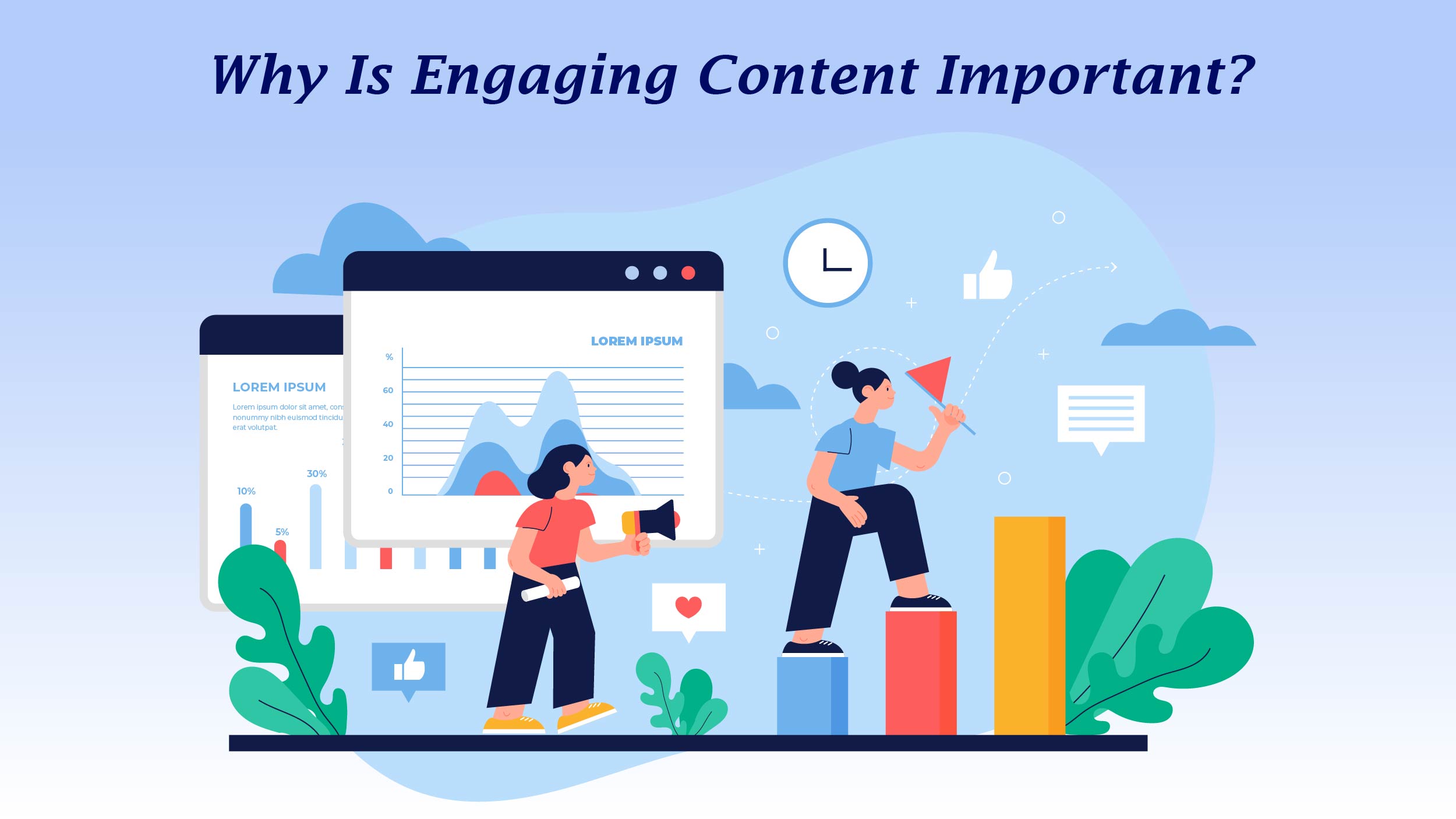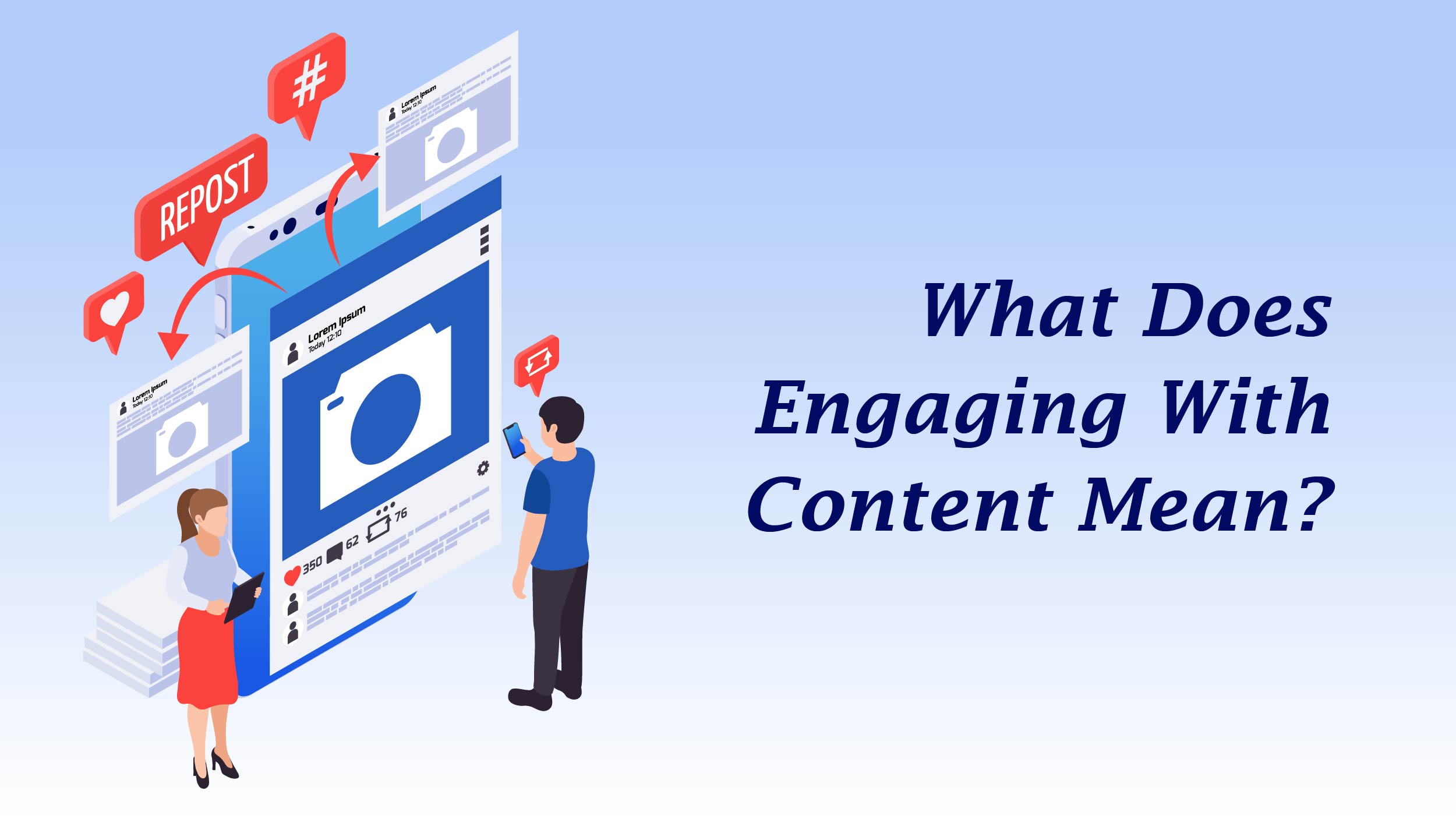Content engagement refers to the way your audience interacts with your content. It includes actions such as liking a post, commenting, or sharing. These interactions are essential metrics that significantly influence the purchasing process. Even if you have a top-notch product or service, its effectiveness is compromised if your audience doesn’t engage with your content.
Recognizing the importance of tracking content engagement metrics is crucial. Before delving into the details, let’s establish a foundation by understanding the basics.
What is Content Engagement?
Content engagement refers to the various interactions that users have with digital content, such as clicking, commenting, sharing, saving, and subscribing. These interactions provide valuable insights into user behavior, allowing marketers to understand the user journey and improve content creation strategies. Content engagement strategies go beyond superficial metrics, offering actionable data to inform content marketing strategies and enhance return on investment (ROI). By measuring proper engagement, marketers can gain valuable insights into audience resonance and its impact on driving sales, making it a pivotal component of digital marketing strategies.
Why Is Engaging Content Important?
 Fifty percent of businesses spending $2,000 or more on a single piece of content report a highly successful strategy. Here are some reasons why effective content engagement is necessary for a business:
Fifty percent of businesses spending $2,000 or more on a single piece of content report a highly successful strategy. Here are some reasons why effective content engagement is necessary for a business:
- Proven Effectiveness: Businesses with active blogs generate more leads, as nearly half of consumers engage with content 3-5 times before interacting with a sales agent. Establishing a strong online presence contributes to gaining new and valuable leads.
- Enhanced Participation: Consistent creation of fresh and engaging content is crucial not only for attracting new customers but also for fostering brand loyalty. Ongoing content development increases the likelihood of retaining clients.
- Meeting Customer Expectations: In the current digital landscape, online interaction is an expectation. Businesses must engage with consumers across various social media channels to avoid falling behind more technologically advanced brands.
- Community Building: Positive interactions, whether through a humorous tweet, an inspiring Facebook post, or an engaging video, elevate a brand’s image. Social media tone should align with the target audience for maximum impact.
- Wider and Responsive Reach: Customizing and diversifying content interactions offers flexibility to reach a broader or more specific audience. Experimenting with different strategies helps identify approaches that resonate with the most responsive and potential buyers.
Also Read: What Is Target Affiliate Marketing, And Is It Worth In 2024?
How To Measure Content Engagement?
Understanding the definition of success is crucial when evaluating content engagement. This involves clarifying your content engagement goals and identifying your target audience and the reasons for interaction. Once these aspects are clear, you can pinpoint the most relevant engagement indicators to track.
Listed below are key content engagement metrics that can contribute to increased engagement. However, it’s essential to consider the context of the data and prioritize these metrics based on their significance to your overall strategy.
- Conversion Rate: Focus on content that effectively convinces customers to make a purchase.
- Bounce Rate: Gauge the bounce rate i.e. the percentage of readers who leave your website quickly. If this number is considerably high, it may indicate content issues.
- Page Views Per Session: Measure the number of web pages a user opens in a single session, indicating their level of engagement with your material.
- Time on Site: Assess the duration a visitor spends on your website, reflecting their interest and engagement.
- Likes, Comments, and Shares: Prioritize social engagement metrics such as likes and shares. Comments provide an opportunity to spark conversations and cultivate a user community.
How Can Content Be Engaging?
Once you’ve assessed your content engagement, it’s time to leverage the gathered data to enhance your strategy’s effectiveness. A straightforward approach to achieve this is to define criteria for successful content. While visually rich material often performs well, further research may reveal other standout qualities. For instance, interactive content tends to be more engaging than static content. Identifying these trends can enhance the relevance of your other content for your audience.
Utilize A/B testing to strengthen your overall approach. This method allows you to compare different variables within your content, determining which options are most effective. For example, if you’re organizing an email marketing campaign to promote a new product in your e-commerce store, you can use A/B testing to compare different versions of the email. This process helps determine the most suitable title, design, inclusion of animated gifs, and the type of call-to-action (CTA) that resonates with your buyer persona. Measuring and implementing improvements to your content is a time-intensive process, but it yields exceptional returns. By implementing the best practices, you can increase content engagement and cultivate an audience that is increasingly interested in your business.
What Does Engaging With Content Mean?
 Clicking, sharing, leaving comments, and meaningfully interacting with digital content are just a few of the actions that consumers take when they engage with it. A variety of actions, such as social media likes, shares, clicks, form fills, and other forms of involvement, can be included in this interaction. When an audience finds something appealing, fascinating, and attention-grabbing, they are ultimately more likely to connect with it on an emotional and amusing level. This is known as interacting with content. The goal is to produce content for websites, social media platforms, and other digital channels that motivate users to act.
Clicking, sharing, leaving comments, and meaningfully interacting with digital content are just a few of the actions that consumers take when they engage with it. A variety of actions, such as social media likes, shares, clicks, form fills, and other forms of involvement, can be included in this interaction. When an audience finds something appealing, fascinating, and attention-grabbing, they are ultimately more likely to connect with it on an emotional and amusing level. This is known as interacting with content. The goal is to produce content for websites, social media platforms, and other digital channels that motivate users to act.
How to Craft Engaging Content?
Creating content engagement ideas that resonate with your audience requires a strategic approach to writing. Consider the following techniques to ensure your content is not only compelling but also highly shareable:
- Understanding Your Audience: Start by researching and understanding your target audience. Know their interests, preferences, and pain points. Tailor your writing style to resonate with them on a personal level.
- Clear and Concise Language: In the digital age, attention spans are short. Use clear and concise language to convey your message effectively. Break down complex ideas into digestible chunks to keep your readers engaged.
- Compelling Headlines and Openers: Craft attention-grabbing headlines and introductions. Your headline is the first impression, and an intriguing opener entices readers to continue. Use curiosity, humor, or a relatable story to capture attention.
- Storytelling Techniques: People are naturally drawn to stories. Integrate storytelling techniques to make your content more relatable and memorable. Share real-life examples, case studies, or anecdotes that illustrate your points.
- Emotional Triggers: Connect with your audience on an emotional level. Identify emotions that resonate with your content’s purpose, whether it’s joy, empathy, or inspiration. Use language and storytelling to evoke these emotions and create a lasting impact.
Bonus Tip: Enhancing the visual appeal and user experience of content is crucial for engaging audiences. Incorporate multimedia elements like images, infographics, and videos to break up text and enhance understanding. Maintain a consistent visual identity to reinforce brand recognition. Optimize content for mobile devices, including interactive elements like quizzes and surveys. Make content accessible to a diverse audience by using alt text for images and providing text descriptions for videos. These strategies create a valuable resource catering to the target audience’s preferences.
Wrapping It Up
It is difficult to overlook content engagement in the current marketing environment. If you know who your target audience is, creating content that will appeal to them and boost sales and brand loyalty is easy. Set up analytics for the website and social media accounts that belong to your business. Your business will grow if you take the time to look over the data and figure out what kind of content appeals to your target audience.


Comments are closed.